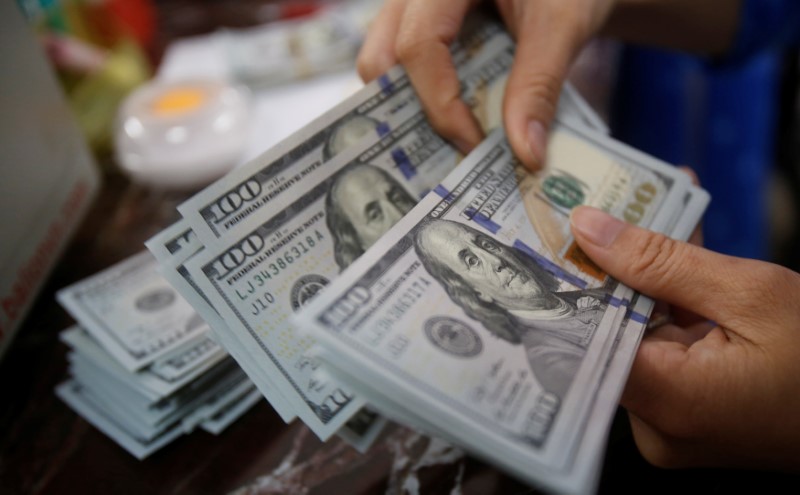By Peter Nurse
Investing.com - The U.S. dollar edged lower in early European trade Tuesday, slipping back from a 20-year high as gains in global equity markets helped risk appetite rebound to the detriment of this safe haven.
At 3:15 AM ET (0715 GMT), the Dollar Index, which tracks the greenback against a basket of six other currencies, traded 0.2% lower at 103.953, falling back from Friday’s 105 level, its highest since December 2002.
“Risk assets are desperately seeking some stabilisation after seven consecutive weeks of losses in U.S. equities and exacerbating market concerns over the combination of a global economic slowdown and monetary tightening,” said analysts at ING, in a note.
The dollar has edged lower from a two-decade high as U.S. bond yields have pulled back slightly as traders calculate aggressive near-term interest rate hikes from the U.S. Federal Reserve will drag on long-term U.S. growth.
Some evidence pointing to a U.S. economic slowdown emerged Monday with the New York Fed's Empire State manufacturing index showing an abrupt fall during May.
While the US dollar typically strengthens when a recession is looming, its performance is more mixed when it hits, according to research from Goldman Sachs.
There are two possible outcomes for the currency in coming weeks, according to the influential investment bank. If the global growth outlook improves, it will weaken as investors veer to riskier assets, but if the world economy does enter a recession, the dollar’s path is murky, with the Japanese yen likely to outperform the dollar as it usually does well during recessions.
Investors now await speeches from Fed Chairman Jerome Powell and other Fed policymakers later in the day.
EUR/USD rose 0.3% to 1.0460, bouncing back from the 1.0354 level it hit last week, its lowest since early 2017, while GBP/USD rose 0.6% to 1.2391, recovering from last week’s 1.2156 low, helped by data showing the U.K. jobless rate falling to its lowest level since the early 1970s.
USD/JPY rose 0.2% to 129.37, with the yen also weakening as traders chose to side with more risky currency.
AUD/USD rose 0.7% to 0.7015, after the Reserve Bank of Australia released the minutes from its latest policy meeting earlier in the day, while NZD/USD rose 0.6% to 0.6344, with New Zealand’s central bank likely to increase interest rates by half a percentage point at each of its next three policy meetings, according to Westpac earlier Tuesday.
USD/CNY fell 0.5% to 6.7546, with the yuan appearing to be finding a base after sliding more than 6% in a month amid rising hopes that an end to Shanghai's strict COVID-19 lockdown may be drawing nearer.
